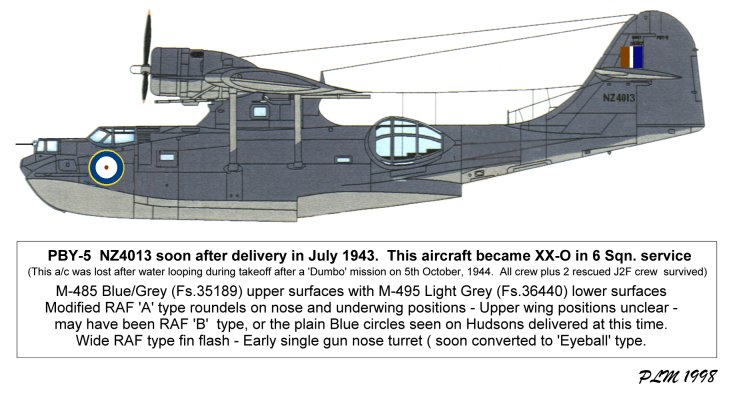
|
RNZAF CATALINA COLOUR SCHEMES |
|
The first Catalinas arrived in the standard U.S.Navy two colour scheme of Blue/Grey (approx Fs.35189) uppers with Light Grey (Fs.36440) lowers. Roundels and fin flashes were RAF types, 'A' type on the fuselage nose and underwings, and possibly 'B' type on the upperwings. I have not seen any photos of the uppers to confirm this. Some Hudsons received at this time reportedly had a plain Blue circle as an upperwing marking and the Catalinas may have been marked in a similar fashion. The 'A' type roundels appear to have had the white portion enlarged into the centre to reduce the size of the central Red portion. Fuselage roundels only had a Yellow outer ring.
|

|
The fin flash was of the RAF unequal proportion style with Red leading. NZ4002, NZ4003, NZ4005, NZ4006, NZ4007, NZ4008, NZ4009, NZ4010 and NZ4011 were from an RAF order, and still had their RAF serial numbers. These were soon overpainted. By October
1943, the nose roundels had been overpainted (probably with Ns.Sea Blue).
Squadron codes were painted on the forward fuselage in Orange/Yellow (Fs.33538).
(See Drawing 2) and RNZAF Blue/White/Blue roundels added to the rear fuselage
and the wings.
|
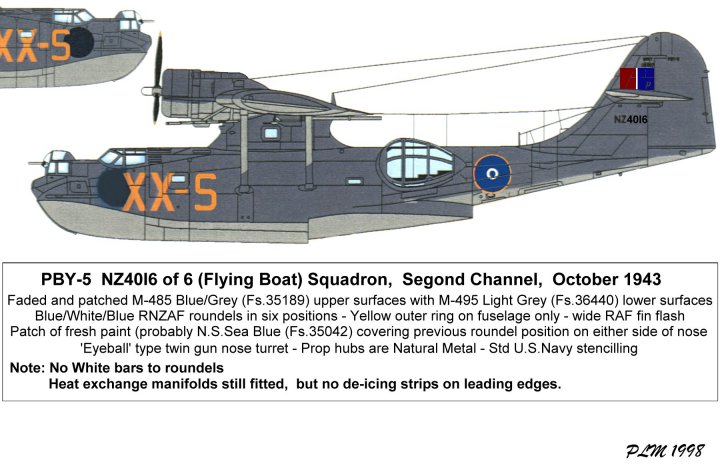

|
By December 1943, White bars began to appear on the roundels, initially without any borders, and only on the fuselage and underwing positions. Fuselage roundels retained their Yellow outer ring. (See Drawing 3) In early 1944 the upper wing roundels also began to receive the white bars.
|
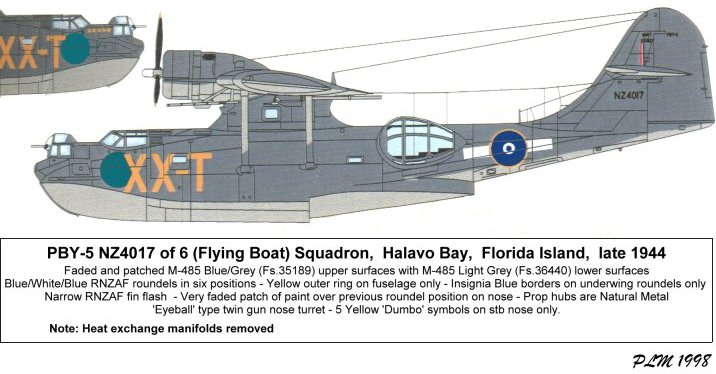
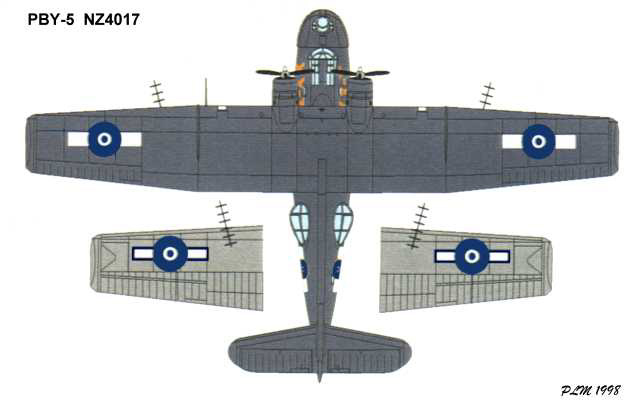
|
At this time, the U.S.Navy 'Four Tone' scheme began to appear - Upper wing and tailplane surfaces were Semi Gloss Sea Blue (Fs.25042), upper fuselages were Ns.Sea Blue (Fs.35045) fuselage sides were either Intermediate Blue (Fs.35164) or a blended overspray of Ns.Sea Blue (as shown in the two following photos) and lower surfaces were Insignia White (Fs.37880). There are very few photos showing RNZAF Cat's in this scheme
|
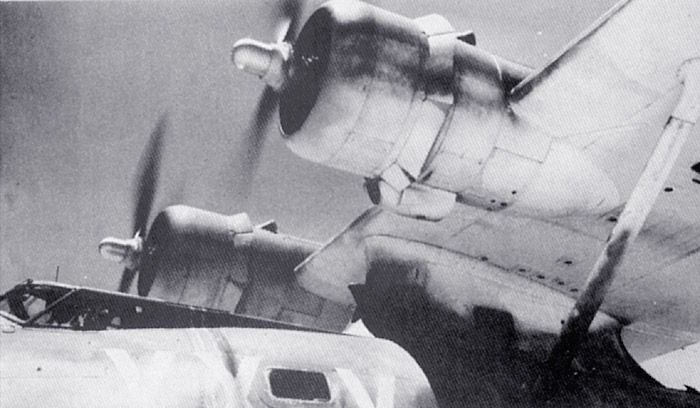
|
A good shot showing the blending of the Semi Gloss Sea Blue into the White underside with no Intermediate Blue. This was one interpretation of the 1943 regulations |
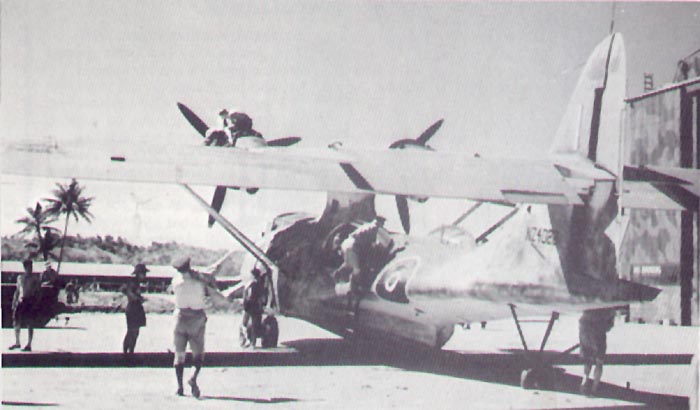
|
NZ4022 at Lauthala Bay, Fiji, October 1943. Note the graduated blending of the upper colour to the undersides. |
|
The final scheme began appearing by late 1944 on the PB2B-1's with ANA 623 Glossy Sea Blue (Fs. 15042) upper surfaces and ANA 511 Insignia White (Fs. 17875) fuselages (drawing 4) Some PB2B-1's appear to have been in the Dark Gull Grey/Gloss Insignia White/Non Specular Insignia White scheme and can be seen in drawing 5.
|
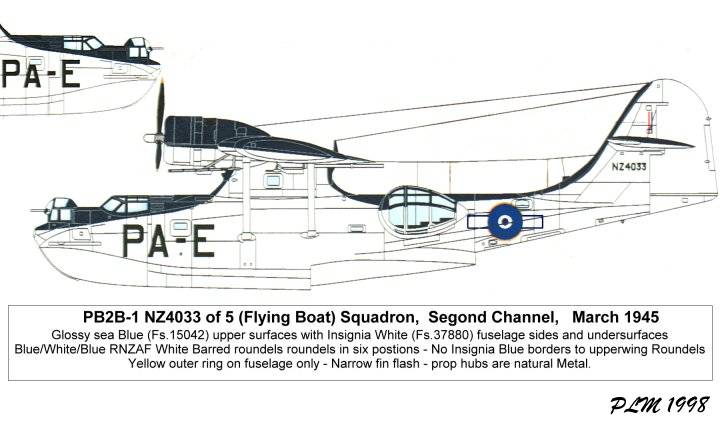
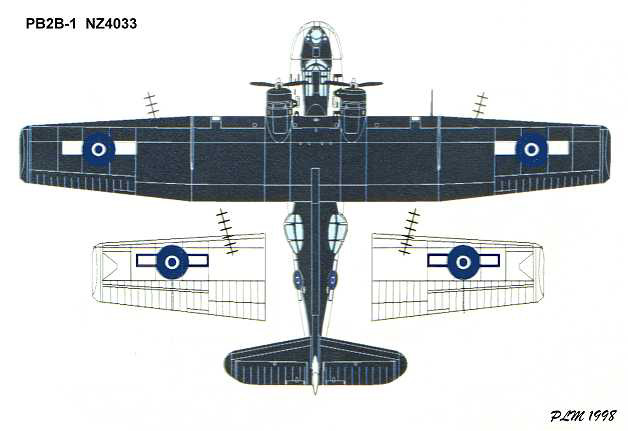
|
Many of the surviving PBY-5's were repainted with the fuselages and the lower wing surfaces in ANA 511 Insignia White - The upper surfaces appear to have remained in the Blue/Grey or had been repainted in N.s Sea Blue. Squadron codes were Black. Post-war, all of the operational Catalinas were in this scheme or the Dark Gull Grey scheme, and No.5 (Maritime) Squadron Catalinas had their serial numbers painted in Black under the wing surfaces, Port facing aft and Starboard facing forwards. The roundels reverted to the RAF "D" type in all six positions with Wide equal proportion fin flashes. (See photo of NZ4053, and drawing 5) Most U.S.Navy maintenance stenciling was retained, including the type and Bu.No. stenciling on the fin and rudder. Propeller domes appear to have remained in Natural Metal with all schemes.
|
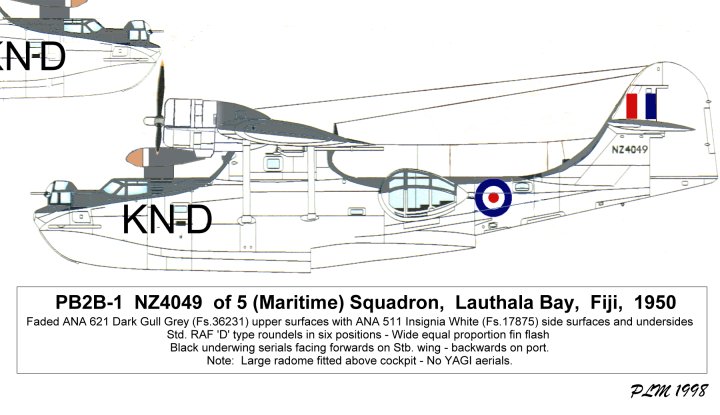
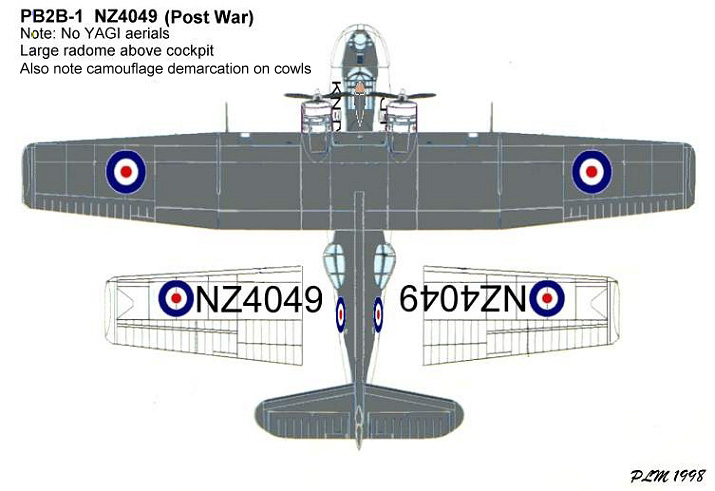
|
Copyright: Peter Mossong 1998. No drawn images or text contained in this publication may be used for commercial purposes without the express permission of the author. Drawings adapted (with permission) from originals by Jack Morris (artist for AeroMaster Products) using information supplied by the author. Background image is from a Maurice Conly painting. |